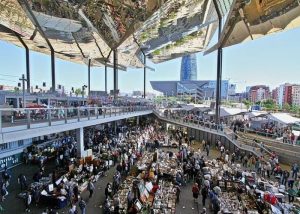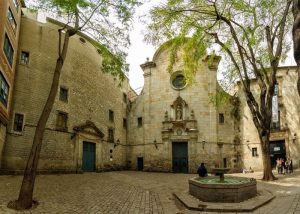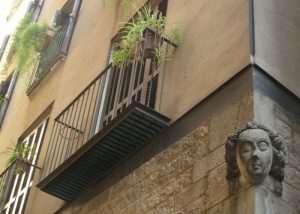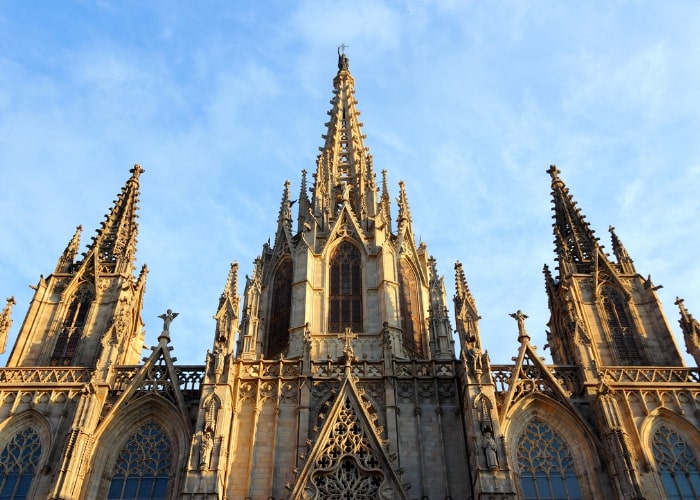Barcelona is the favourite Spanish city destination for foreigners. The city receives millions of tourists from both home and abroad every year. Yet there are still idyllic spots that not every tourist has discovered. In this article we give a ten of them.
In addition to the well-known Ramblas, Sagrada Familia, Parque Güell, Camp Nou, Barcelona has many inconspicuous places with hidden stories.
The air-raid shelter Refugio 307
During the Spanish Civil War, (1936-1939), more than 1,400 air raid shelters were built to shelter the citizens of Barcelona. One of the most visited bomb shelters is Refugio 307, in the Poble-sec district. This is one of the few above-ground shelters in the city. And where clever use has been made of the shelter of the Montjuïc mountain.
The statue of Liberty
New York may have the real Statue of Liberty, but there are also two in Europe. One of which is in Barcelona. There is a small replica in the public library Biblioteca Arús. Compared to the real Statue of Liberty, it is indeed small. But at two meters high, Lady Liberty is still very imposing. In addition to its size, there is another difference with the real Statue of Liberty, However, the visitors can discover that for themselves. The second European Statue of Liberty is located in Paris. For those who think they will quickly get bored of the Statue of Liberty, the library itself, which dates from 1895, is definitely worth a visit.
Mercado de los Encantes

The flea market Los Encantes has existed in Barcelona for over 700 years. This makes it one of the oldest surviving markets in Europe. Nowadays you can find almost everything there, but originally there were mainly rag, book and scrap dealers. What makes this market so special is that every Monday, Wednesday and Friday between 7 and 9 am there are public auctions of batches of second-hand items and curiosities. Originally, these auctions were intended to sell items of the deceased, with the aim of raising some money to pay off any possible remaining debts.
The Church of San Felipe Neri

This church is not only interesting for church lovers, but also for those who love tangible history. The machine gun impacts from the Spanish Civil War are still visible on the facade of the church. The church can be found on a small and quiet square in the Barrio Gótico.
The Roman thermal baths
Barcelona existed thousands of years ago. Witness to this are the Roman baths from the first century on calle Regomir. These thermal baths were intended for the sea merchants who arrived in Barcelona via the Puerta del Mar. A 17-metre-long section of a Roman wall from the fourth century can also be visited here.
The Chapel of Santa Madrona
In the Spanish Middle Ages, Barcelona had dozens of chapels. Today the Ermita de Santa Madrona from 1754 is still worth a visit. The relics of Saint Madrona are said to have been preserved here, although most of them were lost in a fire in 1909, during the Tragic Week (Semana Trágica). The chapel can be found on the mountain of Montjuïc, in the Poble-sec neighborhood, in the gardens of Joan Maragall.
Las Carassas

If you are walking through Barcelona, take a look up. It may just be that you see faces on facades and facade corners. These are the so-called Carassas. Previously they were used to indicate the facades of brothels. A considerable number of these faces have since disappeared from the facades, but there are also buildings that have managed to keep them.
A real Miró in the middle of the street
Barcelona-born painter Joan Miró has clearly left his mark on the city. Examples are the Miró museum of modern art (Fundación Joan Miró) in the Montjuïc park, the own Joan Miró park or the enormous mosaic that adorns Terminal B at el Prat airport. But on the Ramblas you can walk on a real Miró. A mosaic by the artist has been located on the explanada del Pla de l’Os since 1976, close to the place where he was born 83 years earlier. After the attacks in Barcelona in 2017, this mosaic has become a symbol for the suffering but also for the connection it brought with it.
Underground Barcelona
There are several possibilities to discover a Barcelona underground. For example, the municipality organises guided tours through the underground sewerage system, including the impressive water reservoir of the Joan Miró park. But there are also tours through underground mazes, caves, medieval tunnels, ghostly abandoned metro stations, air raid shelters. In other words, there is something for everyone.
El Bosc de les Fades
If you want to end a visit to the city in an enchanting way, you can have a drink in el Bosc de les Fades (the fairy forest). In this cafe you imagine yourself in a true fairytale between the magical trees, fairies and dwarfs, spread over different rooms, each with its own atmosphere. The café is located in the Barrio Gótico, in a small street near the beginning of the Ramblas, next to the waxwork museum Museo de la Cera. But make no mistake, this hidden gem is really hidden. But once you find it, you have a real gem.


